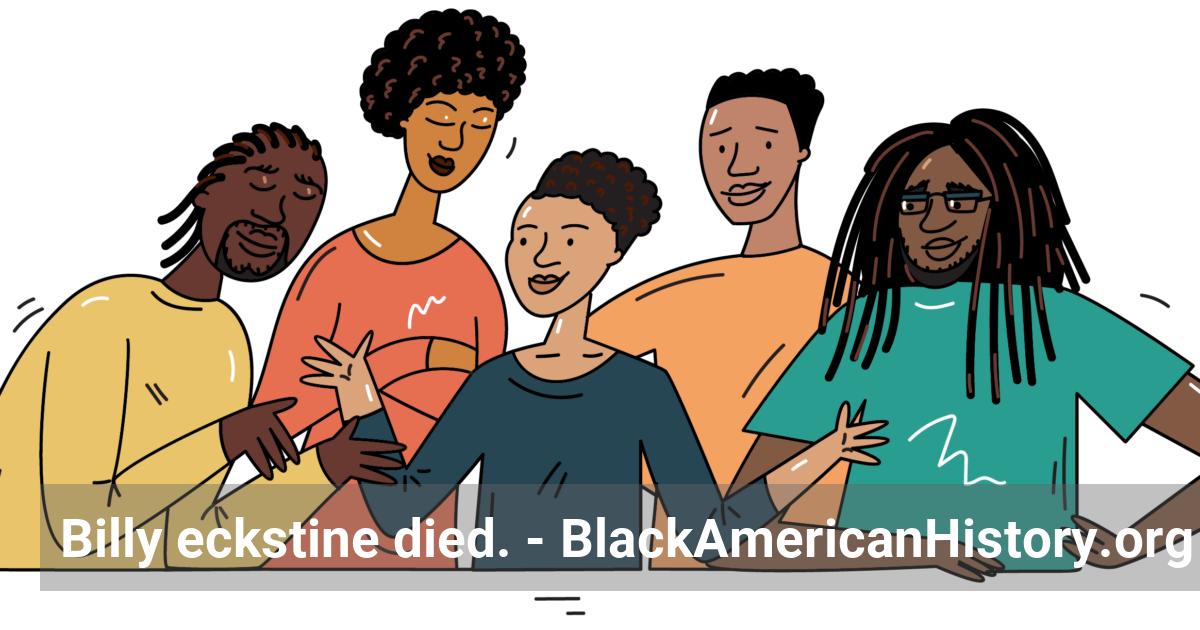Home / Full timeline / Singer Billy Eckstine, popularly known as “Mr. B.,” died in Pittsburgh, Pennsylvania, at the age of seventy-eight.
 Singer Billy Eckstine, popularly known as “Mr. B.,” died in Pittsburgh, Pennsylvania, at the age of seventy-eight.
Singer Billy Eckstine, popularly known as “Mr. B.,” died in Pittsburgh, Pennsylvania, at the age of seventy-eight.
1993 (Mar 8)
Singer Billy Eckstine, popularly known as "Mr. B.," died in Pittsburgh, Pennsylvania, at the age of seventy-eight. During the late 1940s and early 1950s, his rich baritone voice made him one of America's top vocalists and among the first to become a crossover star with white audiences. With his coolly casual look—a shirt with a rolled collar and a jacket loosely draped from his shoulders—Eckstine was also pop music's first Black male sex symbol. Born William Clarence Eckstein in Pittsburgh in 1914, he grew up in Washington, D.C., and attended Howard University. He started singing when he was about seven and drifted into it professionally during the 1930s. His first performances were with various amateur shows and dance bands that toured throughout the East and Midwest. In 1939, Eckstine joined Earl "Fatha" Hines's orchestra and taught himself to play the trombone and trumpet. But it was as a singer that he helped the band gain national fame with two hit records, "Jelly" and "Stormy Monday Blues." Eckstine left Hines in 1943 and spent a year as a solo act before pulling together his own band. It did much to popularize the new bebop style of jazz by featuring some of its greatest performers, including Miles Davis, Dizzy Gillespie, Charlie "Bird" Parker, Sarah Vaughan, Dexter Gordon, and Art Blakey. During the late 1940s, Eckstine turned once again to a solo singing career. He then sang one hit romantic ballad after another. Among his biggest successes were "Fools Rush In," "Everything I Have Is Yours," "Prisoner of Love," "My Foolish Heart," "Body and Soul," "I Apologize," "Blue Moon," and "Passing Strangers." By singing such love songs when a white woman might be listening, Eckstine challenged one of the biggest taboos of a segregated society. "We weren't supposed to sing about love," he later recalled. "We were supposed to sing about work or blues." Despite his popularity, Eckstine was rarely offered opportunities to work in movies or on television due to his race. And when he did make an appearance, he was told not to let his eyes rest on any of the white actresses watching him sing. So he spent the rest of his career entertaining enthusiastic audiences in major jazz dubs across the country.
References:
- • Hornsby, Alton. Chronology of African-American History: Significant Events and People from 1619 to the Present. Detroit: Gale Research, 1995.
